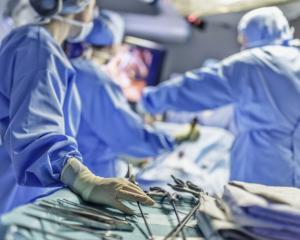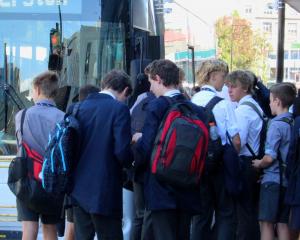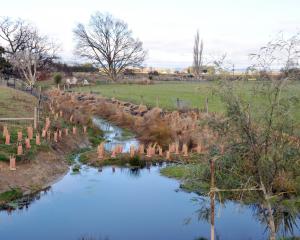The extent to which the long-besieged Invermay research campus has been saved appears to be very much in the eye of the beholder. Some of us are still none the wiser as to what has been saved.
Many were relieved when Research, Science and Innovation Minister Megan Woods told AgResearch she wanted Invermay maintained as a centre of primary sector research, especially for sheep genetics and genomics.
That relief was reinforced when she said she expected AgResearch to maintain human and physical capital already developed at the site, and when acting chairman Paul Reynolds told her it would.
On the face of it, that ought to be enough to assuage the fear of those worried the centre was living on borrowed time even after AgResearch this year abandoned its ill-fitting plans to shift staff north.
It did not do so voluntarily. It would have moved top scientists and support staff to Lincoln had the Government accepted its business case to establish its $206million campus.
That campus — and the erosion to Invermay and significant staff upheaval that came with it — was on the cards since the Future Footprint plan was announced in 2013.
At the time, AgResearch expected up to 85 staff to move to Lincoln and to Palmerston North. As it turned out, many did not wait around to be told it was time to move on.
The Invermay the minister’s letter may have saved, whether for all time or until whatever comes from the next election, is very different to what campaigners sought to save from 2013.
It has lost three staff to Lincoln. It lost six positions when they were made redundant. And as the clouds of uncertainty thickened, another 44 staff quit.
AgResearch said the latter was ‘‘natural turnover’’. There is every chance this is true — one would expect such turnover is entirely natural when the future seems so uncertain.
Who can blame people with such internationally marketable, in-demand skills for taking their skills elsewhere when it becomes clear their future may be out of their hands?
Whatever the case, the loss of so many people from a campus so reliant on the retention and development of cutting-edge scientific knowledge and capability is lamentable.
As former Invermay head Jock Allison told the ODT this month, there would have been far more to celebrate if the process had not taken so long, and so many good staff had left.
That said, those still at Invermay are among the best sheep genomics scientists in the world and, barring further changes, they will continue to make significant contributions to a sector that has significant respect for their work, if not the dalliances of their employer.
But they must be given the confidence to do so without the spectre of further upheaval, or the need to keep an eye open for employment opportunities elsewhere. AgResearch had the chance to allay their fears this month and it appears to have blown it.
It refused to answer our questions about its commitment to keeping key staff at Invermay at about the same time the newspaper learned it had not told key staff whether they would stay where they were.
It may have more to say later but there is a sense that staff, and the farming and scientific communities that have supported it for so long, deserve certainty.
This is important because the campus, like any other, is more than bricks and mortar. Industry leaders who fought for it fought to keep the scientific community’s capacity to continue its work in a place that nurtures it.
They fought for the people they work alongside, and for the role they play in the hub of scientific excellence we have in the University of Otago, B+LNZ Genetics, and AbacusBio.
That is the Invermay many hope has been saved, and many hope to hear has been.












